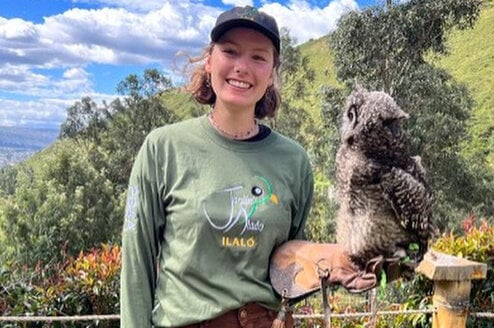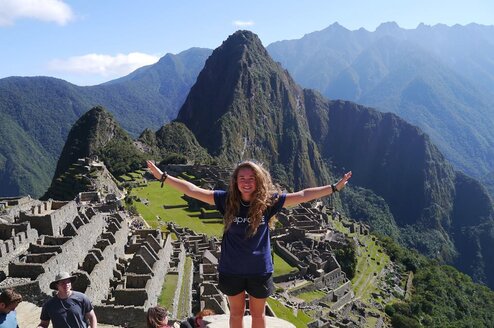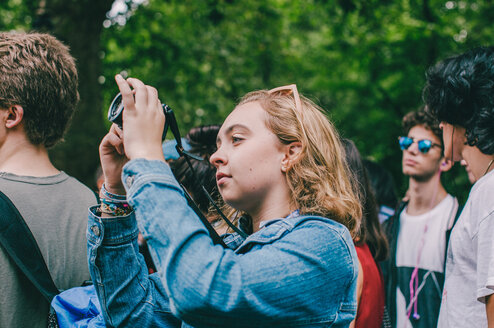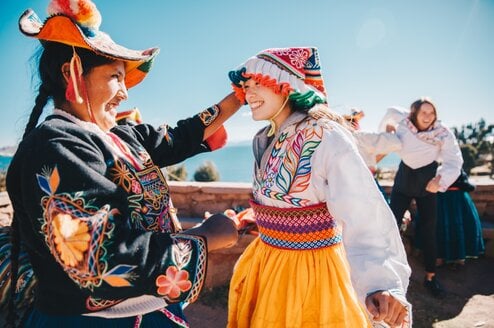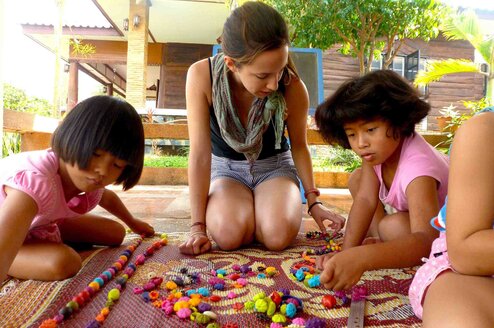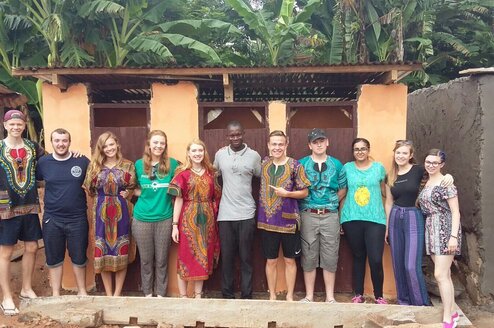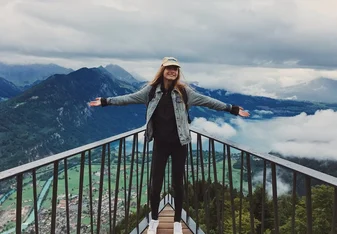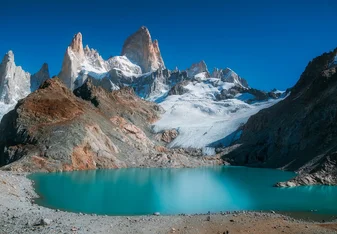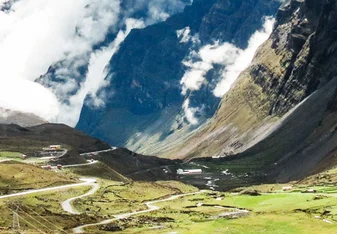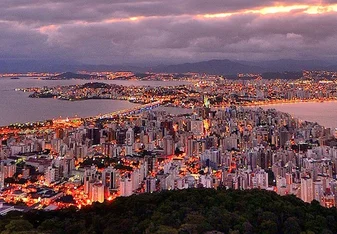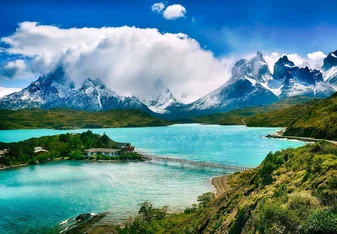Gap Year in Ecuador
About
Have you ever put popcorn in your soup? Have you scaled (or photographed) the tallest active volcano in the world? In Ecuador, you can do both those things in the same few hours. From the top of Cotopaxi to the murky Tiputini river, Ecuador’s strikingly diverse and beautiful surface is easily traversed and quickly adored by backpackers and travelers.
This often-overlooked South American country has cheap, secure buses that will bring you all over the country until you find the corner where you’d like to spend more time – teaching, volunteering, working, or learning Spanish. It may be Quito’s gritty urban vibe or a hammock on the Pacific Ocean that calls you to unpack your bags and pause with a cold Pilsener beer or fresh mora juice, but Ecuador is truly a treasure trove of astounding natural beauty. Volcanoes, the Amazon rainforest, Andean villages, lakes, valleys, beaches, colonial towns – a few hours will transport you to an entirely different ecosystem and geography in this diverse little nation.
Types of Programs
Adventure Travel
With technical mountains to scale and beautiful coastlines to snorkel, Ecuador has plenty of thrills for adventure travelers. Small towns like Mindo and Baños, a few hours outside Quito offer affordable rappelling, ziplining, bungee jumping, rafting, horseback riding and mountain biking. Climbing opportunities abound on volcanoes like Cotopaxi, the Ilinizas and Chimborazo, birdwatchers will find a host of tours in various environments and whale watching can be arranged on the Pacific coast. While not for the tight-budgeted, scuba divers could spend a lifetime exploring the Galapagos Islands. If you prefer to keep your feet on solid ground, a trek in the Amazon rainforest is humbling and unforgettable.
Spanish Lessons
Not a word of Spanish left over from your high school days? Most regions in Ecuador speak relatively clear, slow Spanish that’s easy to follow. In some places, like Baños or Quito’s Mariscal area, you’ll have to be diligent not to fall into the English-only gringo bubble, but off the beaten path there is a friendly Ecuadorian local who would love to talk to you about his or her beautiful country. Take a few classes and get out on the streets to practice – because no matter what your profesores tell you, the real world is the best classroom.
Teaching English
If you already have a TEFL or similar certification, cities like Quito, Guayaquil and Cuenca have private language institutions and schools looking for native English teachers. If you have the teaching bug but not the experience, try an organization like WorldTeach that will give you training, housing, visas, a teaching placement and support for the price of program fees. GeoVisions is another international agency that will help you arrange teaching and conversation exchange placements.
Volunteering
Ecuador has its fair share of poverty and social issues, making it an excellent location to find volunteer opportunities. The overwhelming biodiversity of the Galapagos Islands and the Amazon rainforest mean ample organizations dedicated to conservation and biology studies, while a large indigenous population offers anthropologists a host of social justice causes. You can easily organize through a volunteer program before your trip or search for options upon arrival. UBELONG offers conservation programs in the Galapagos – a great way to see the islands and volunteer at the same time. Yanapuma is an Ecuador-based nonprofit that connects volunteers with projects around the country and has a language school in Quito.
Planning Your Trip
Cost of Living in Ecuador
Ecuador is a very affordable place to live and travel. A frugal backpacker can get by on $30 a
day for eating, transportation and lodging.
- Intercity buses cost around $1 USD per hour, with regular city buses 25 or 30 cents a ride. Taxies run about $5 USD for a 15-minute ride – ask your driver if he has a meter, or determine a price before getting in the cab.
- A hostel dorm will cost you $5-10 USD.
- Groceries, fruit, vegetables, set meals and street food (for the strong of stomach, of course) are cheap and fresh. A set lunch costs $4-7 USD.
- Beers start at about $1.50 and cocktails $5-10, and there are often typical 2 for 1 deals or happy
hours catering to travelers. - Hostels and bars might hire travelers in exchange for housing or a very small hourly wage. Private English lessons will help pay your bar tab but won’t do much for the rent.
- Special trips and treks like the Galapagos or Amazon can be expensive. Taking local transportation to the base town or city, rather than inquiring about local tours will cost you some time, yet save you money. It’s possible to organize tours from your home country, though you can often get better deals with agencies in Quito or Guayaquil. Try to stimulate the local economy as much as possible – staying at hotels on the islands, for example, is better for the Galapagos’ infrastructure than cruise ships.
- Try to break larger bills in grocery stores – small vendors, shops and taxis won’t ever have change!
- Altitude sickness might affect you in the capital city – take care to rest, drink plenty of water and remember that alcohol can kick you faster and stronger than at sea level.
- Make sure to acclimatize before big hikes.
- Standard-issue street smarts apply: don’t leave your drink unattended, don’t flash money or electronics in public, don’t walk on beaches at night, and overall, trust your gut!
- Tap water is not potable in Quito; ask about other areas. Be cautious with street food, take care not to eat vegetables that haven’t been washed or cooked properly. If you get sick, you can describe your symptoms at a pharmacy and they’ll give you over-the-counter treatment options.
- Research the latest safety information before crossing to Colombia or Peru by land.
Culture and Etiquette in Ecuador
While still traditionally conservative Catholic, Ecuador sees enough tourists and foreigners within its borders to have a more liberal view towards tourism. Inevitable cultural mishaps will be laughed off with the right attitude but it’s always important to remember that you’re a guest. Lateness is typical but you should arrive at meetings and classes on time. Always be respectful of Ecuador’s natural wonders, even if you already see trash on the ground. Practice normal courtesies when taking pictures of people and children, and above all - be friendly!
Health and Safety in Ecuador
Don’t believe everything that everyone says about Quito. True, street crime is up in recent years,
and you should be exceptionally wary on public transportation and walking at night, but don’t stay cooped up in your hostel for fear of pickpockets. Lock up your valuables, stash money in your sock and don’t let your guard down, then get out there and enjoy yourself. Smaller towns and bus travel are safe but keep an eye on your bags, always, and please, don’t blame the entire country if someone steals your camera. Be wary in the Historical Center’s narrow streets, and if you take the cable car to Pichincha, don’t stray past the area with the horses. Exercise the same urban precautions in Guayaqui. Take care with taxis – it’s always safer to call a trusted radio service than hailing a cab off the street.
Why Take a Gap Year in Ecuador?
If you’re looking for a friendly South American country with adventure, natural beauty, welcoming locals and cheap travel, Ecuador is the perfect place. For the second-smallest country in the region, it has more natural wonders than you can imagine that are all easy and affordable to access. Start in Quito and plan your travel on the go, unless you’re trying to book a Galapagos trip or a popular destination during the holidays. If you’re heading to the coast or Cuenca overnight, don’t forget your Otavalo-purchased alpaca blanket – those buses get chilly! Whether traveling, volunteering or studying, every corner of this beautiful country will capture your heart and beg you to stay. Jump off that waterfall, climb that volcano and have a laugh at the corner tienda, all while basking in Ecuador’s landscape, culture and embrace.
